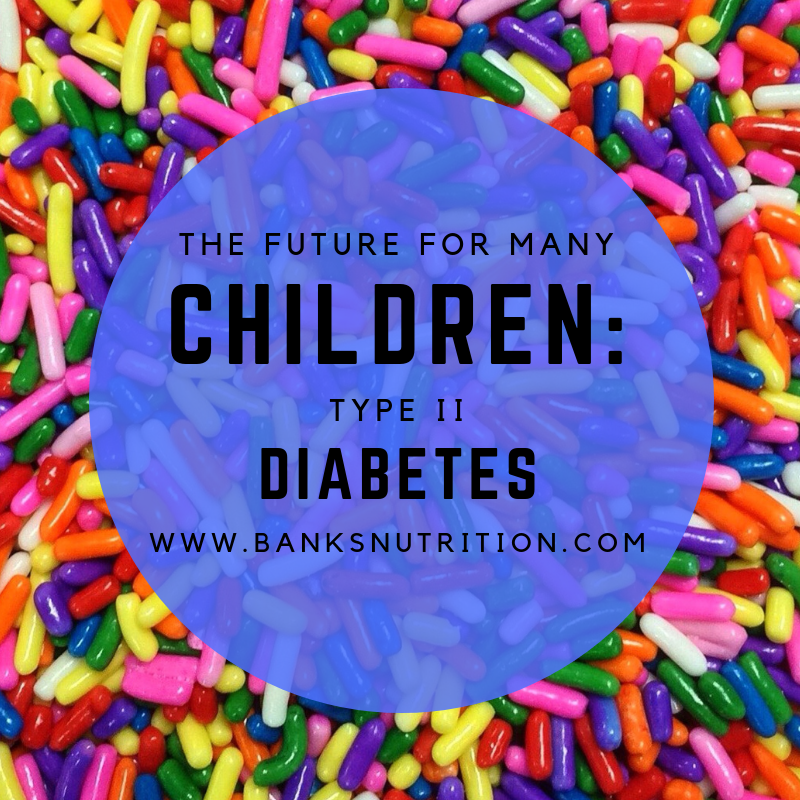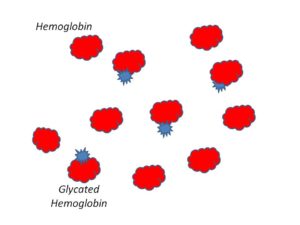
The Future for Many Children: Type II Diabetes
-
33% of children born since 2000 will develop diabetes in their lifetime
-
Study looking at three different drug and lifestyle regimes in children with type II diabetes
-
Diet/lifestyle connection with type II diabetes
Type II diabetes was formerly called adult onset diabetes. It is the type of diabetes where diet and weight eventually wear down the body’s ability to handle sugars and carbohydrates. Fifty years ago, the amount of sugar and refined carbohydrate in our diet made this type of diabetes rare before 50 years of age, hence the term adult onset. Children rarely developed diabetes then; it was exclusively an autoimmune disease where something stirred up the immune system. The autoimmune disease turned around and destroyed the pancreas and its ability to produce insulin (juvenile onset or type I). My pathology textbook (study of disease) in grad school only referred to adult and juvenile onset diabetes.
By the 1980’s, everything was beginning to change. Up to that point, only about 3% of all new cases of diabetes in children where Type II. The latest statistics show that by 2005, 45% of all new diagnoses of diabetes in children are type II. It is not that type II diabetes is simply replacing type I but rather an explosive increase in the percentage of children with diabetes. It is now estimated that one in three, or 33% of children born since 2000 will develop diabetes in their lifetime!
Once many of us get over the shock of these statistics, we tend to try to mentally minimize them by an poorly founded belief that modern medicine will save them from the ravages of diabetes with some better combination of drugs. A new study just published in the New England Journal of Medicine proves that that hope is more of a myth. The study looked at three different drug and lifestyle regimes in children with type II diabetes. The reality is that with the study definition of “successful treatment”, its failure rate in children is an alarming 40-50%.
Three different treatments were used; the single first-line drug, metformin, metformin with lifestyle intervention and metformin with another drug, rosiglitizone or Avandia. The single drug was able to achieve the target blood sugar control in less than 50%. The combined drug treatment and the drug with lifestyle intervention were successful in 40-45%. Any way you look at it, about half of all diabetic children could not be controlled well with these treatments.
The definition of “control” needs some explanation. The goal used was a hemoglobin A1C of 8% or less for 6 months. This test is a measure of the percentage of hemoglobin that is damage by the attachment of sugar, a process called “glycation”. Our hemoglobin being glycated is not a real problem, but it serves as a simple marker of the extent that other proteins in the body are being damaged.
The ones of great concern are those in blood vessel linings, the retina of the eye, nerves and the kidney filtering membrane. Damage of these areas result in the common complications of diabetes namely vascular disease (heart disease, stroke, peripheral vascular disease), vision loss and blindness, neuropathy, and kidney failure.
The 8% target in diabetes is not a normal value, it is just the best that can safely be done with medication. Normal levels of HA1C are <5.9% and new study suggests that <5.5% is better yet. The reason that 8% is the target value for medication treated diabetes is that trying to push it down further results in episodes of low blood sugar which damages the brain and increases long-term death rates from other causes. The 8% “good treatment control” value for HA1C is simply the best that can be done with medication without causing other problems. An HA1C of 7.5-8% is associated with a more than doubling of vascular disease risk versus the normal population.
The NEJM typically invites a noted individual in medicine to write an editorial to accompany a major article like this. David B. Allen, M.D. from the Department of Pediatrics, University of Wisconsin Medical School aptly titled his editorial “TODAY – A Stark Glimpse of Tomorrow”. His added insight discussed the fact that with “well controlled (8% HA1C) diabetes, there will still be long-term complications after an incubation period of a decade or two. That used to mean at age 65-70 in 1960. It now will be occurring in 30 year olds!
Dr. Allen also commented on the failure of medication with lifestyle intervention. It was not a fair test of the value of weight loss and dietary change. With the program they used, very few participants lost enough weight to make any difference. This means that very few likely made any of the changes. The illusion of the “drugs will fix it” seems to lull most into the trap of “I don’t have to change”.
In reality, lifestyle intervention is the only realistic solution to the problem. We got here by poor nutrition and habits, and we will only get out with changes to the same. Focused nutritional therapy spends considerable time helping the family (two sets of rules in one household never works) understand the diet/lifestyle connection with type II diabetes. It provides information to allow them to make meaningful change which can reverse diabetes in many cases and improve it in every case. This type of intervention and management does not fit within the current medical disease based system, so it is unwise to expect it there or believe that it does not exist elsewhere.
The handwriting is on the wall several years before diabetes shows up in the form of body fat which is the number one risk factor. This is the best time to get serious but good nutritional interventions are the best help available at any point in the process.
